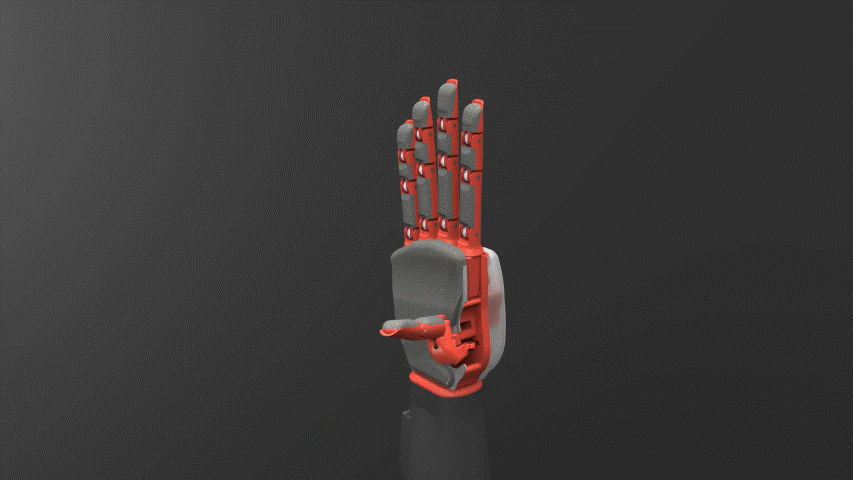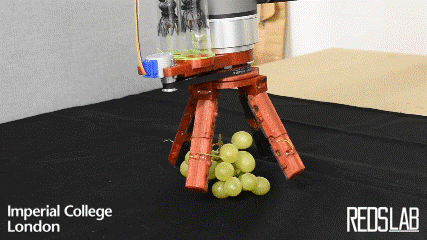Research
Terminal Device and Gripper Design
Non-Humanoid Prosthetic End Effectors
 | Beyond Humanoid Prosthetic Hands: Modular Terminal Devices That Improve User Performance Digby Chappell, Barry Mulvey, Shehara Perera, Fernando Bello, Petar Kormushev, and Nicolas Rojas. IEEE Transactions on Neural Systems and Rehabilitation Engineering. 2025. Paper | Video |
Despite decades of research and development, myoelectric prosthetic hands lack functionality and are often rejected by users. This lack in functionality can be partially attributed to the widely accepted anthropomorphic design ideology in the field; attempting to replicate human hand form and function despite severe limitations in control and sensing technology. Instead, prosthetic hands can be tailored to perform specific tasks without increasing complexity by shedding the constraints of anthropomorphism. In this paper, we develop and evaluate four open-source modular non-humanoid devices to perform the motion required to replicate human flicking motion and to twist a screwdriver, and the functionality required to pick and place flat objects and to cut paper. Experimental results from these devices demonstrate that, versus a humanoid prosthesis, non-humanoid prosthesis design dramatically improves task performance, reduces user compensatory movement, and reduces task load. Case studies with two end users demonstrate the translational benefits of this research. We found that special attention should be paid to monitoring end-user task load to ensure positive rehabilitation outcomes.
The Hydra Hand
 | The Hydra Hand: A Mode-Switching Underactuated Gripper with Precision and Power Grasping Modes Digby Chappell, Fernando Bello, Petar Kormushev, and Nicolas Rojas. IEEE Robotics and Automation Letters (RA-L), presented at ICRA. 2023. Paper | Video |
Human hands are able to grasp a wide range of object sizes, shapes, and weights, achieved via reshaping and altering their apparent grasping stiffness between compliant power and rigid precision. Achieving similar versatility in robotic hands remains a challenge, which has often been addressed by adding extra controllable degrees of freedom, tactile sensors, or specialised extra grasping hardware, at the cost of control complexity and robustness. We introduce a novel reconfigurable four-fingered two-actuator underactuated gripper – the Hydra Hand – that switches between compliant power and rigid precision grasps using a single motor, while generating grasps via a single hydraulic actuator – exhibiting adaptive grasping between finger pairs, enabling the power grasping of two objects simultaneously. The mode switching mechanism and the hand’s kinematics are presented and analysed, and performance is tested on two grasping benchmarks: one focused on rigid objects, and the other on items of clothing. The Hydra Hand is shown to excel at grasping large and irregular objects, and small objects with its respective compliant power and rigid precision configurations. The hand’s versatility is then showcased by executing the challenging manipulation task of safely grasping and placing a bunch of grapes, and then plucking a single grape from the bunch.
[go top]
